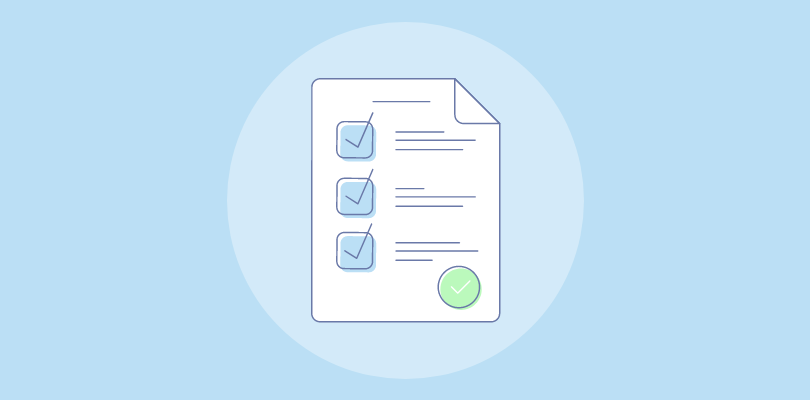Ever slogged through a test and wondered, “Why am I even doing this?”
As someone who’s been on both sides of the desk – giving and taking assessments for over two decades – I can tell you that there’s a lot more to the purpose of assessments than just a final grade.
In this blog, we’ll delve into the basic meaning and purpose of assessments, exploring different forms, benefits, challenges, and the latest innovations in assessments. Plus, we will understand how these assessments can benefit both assessors and assessees by helping them reach their full potential.
Here’s a quick video to help you create an assessment online:
What Is the Purpose of an Assessment?
Assessments serve many purposes, primarily aimed at evaluating and enhancing individual, educational, and organizational performance. These tools help managers, teachers, and HR professionals determine the skills, competencies, and areas for improvement, aligning this information with the strategic goals.
For instance, assessments in professional settings can guide decisions on promotions, compensations, and training needs, ensuring the right person is in the right role.
In educational contexts, assessments play a pivotal role by measuring students’ understanding and mastery of subjects, guiding instructional strategies, and providing feedback that can shape the educational trajectory.
Thus, assessments are fundamental tools for fostering growth, enhancing performance, and achieving targeted outcomes, whether in a corporate office or a classroom.
Watch This Interesting Case Study:
Why Are Assessments Important?
What is the purpose of educational assessments? Or, why are business assessments necessary? Let’s check out the importance of these assessments in our daily life:
- Measurement of Progress and Competence:
Assessments are vital for measuring students’ understanding, skills, and progress in educational settings. They help educators determine whether students are meeting the required learning objectives and where they may need additional support or intervention.
Similarly, in professional environments, assessments can gauge the skills, competencies, and performance of employees. This helps identify areas where further training is needed and ensures that employees can meet their job requirements.
- Feedback Mechanism:
Assessments provide essential feedback to both learners and professionals about their strengths and weaknesses. In education, this feedback can guide students on how to approach their learning process more effectively. In the workplace, it can help employees focus on areas that require development, enhancing personal growth and efficiency.
- Basis for Educational and Career Decisions:
Assessments can influence decisions regarding placements and qualifications in schools and universities. They often determine eligibility for certain advanced courses or specializations.
In the professional world, assessments can impact decisions related to promotions, raises, and other career opportunities.
- Quality Assurance and Standards:
Assessments ensure that educational institutions and professional organizations maintain high standards. By regularly evaluating the outcomes of education or professional training, institutions can ensure that their curricula or training programs are effective and meet the necessary quality standards.
- Motivation and Personal Development:
Both in educational and professional settings, the challenge of assessments can motivate individuals to improve and excel. This motivation can lead to personal development and a more profound commitment to learning or professional growth.
- Accountability:
Assessments hold students, educators, employees, and employers accountable. For students, it means staying engaged and making an effort to learn. For educators and employers, it involves providing the necessary resources and support to enable success in these assessments.
- Resource Allocation:
Assessment results can help management allocate resources more efficiently, targeting training and development programs where they are most needed, especially in professional settings.
By effectively integrating assessments, educational institutions and workplaces can enhance learning, performance, and, ultimately, the success of their programs and objectives.

What Are the Forms of Assessments?
Assessments in both professional and educational settings are crucial for evaluating performance, skills, knowledge, and potential growth areas. Here’s a breakdown of the common forms of assessments used in these two environments:
Educational Settings
- Formative Assessments:
- Purpose: To monitor student learning and provide ongoing feedback that can be used to improve teaching and learning.
- Examples: Quizzes, one-on-one discussions, homework assignments, and classwork that help teachers gauge how well students are understanding the material.
Read More: What is Formative Assessment? Types, Examples & Strategies
- Summative Assessments:
- Purpose: To evaluate student learning at the end of an instructional unit by comparing it against a standard or benchmark.
- Examples: Final exams, midterms, projects, and standardized tests.
- Diagnostic Assessments:
- Purpose: To identify students’ current knowledge and skills and their readiness for particular learning, often before the learning path begins.
- Examples: Pre-tests, diagnostic tests, and entry assessments.
Read More: Guide to Diagnostic Assessments in Education: Definition, Types & Examples
- Norm-Referenced Assessments:
- Purpose: To assess each student against the achievements of other students, providing a ranking system.
- Examples: Standardized tests where student performance is reported as a percentile.
- Criterion-Referenced Assessments:
- Purpose: To measure student performance against a fixed set of criteria or standards rather than against the performance of other students.
- Examples: Most classroom-based tests where students are graded against defined levels of achievement.
Professional Settings
- Performance Reviews:
- Purpose: To evaluate an employee’s job performance and alignment with organizational goals.
- Examples: Annual or biannual reviews, performance appraisals.
Read More: 7 Best Employee Assessment Tools to Boost Your Team's Performance (2024 List)
- 360-Degree Feedback:
- Purpose: To gather feedback from a staff member’s supervisors, colleagues, subordinates, and sometimes, from external sources like customers and partners.
- Examples: Comprehensive feedback systems involving multiple stakeholders.
- Skills Assessments:
- Purpose: To identify the skills and competencies an employee possesses and those they need to develop.
- Examples: Technical skills tests, soft skills evaluations, and professional certifications.
- Psychometric Tests:
- Purpose: To measure cognitive abilities, personality traits, and other psychological attributes that are relevant to job performance.
- Examples: Aptitude tests, personality tests, and emotional intelligence assessments.
- Developmental Assessments:
- Purpose: To help individuals understand their strengths and areas for development, often focusing on leadership or specialized roles.
- Examples: Leadership potential assessments, career development assessments.
These assessments, whether in educational or professional settings, are tailored to specific goals, such as improving learning outcomes, enhancing performance, or guiding career development.
Read More: 13 Different Types of Assessments You Should Know About
What Are the Benefits of Assessments?
Assessments play a crucial role by providing structured methods to evaluate performance, progress, and potential.
Here’s a detailed look at the benefits of assessments:
In Educational Settings
- Enhanced Learning and Understanding: The purpose of assessment in the classroom is to help students identify their strengths and weaknesses in specific subjects or skills, promoting a deeper understanding and guiding their learning process.
- Feedback for Improvement: Regular assessments provide students and educators with timely feedback, enabling adjustments in teaching strategies and learning approaches to meet educational goals better.
- Motivation: Setting clear targets through assessments can motivate students to improve and excel. Achievements in assessments can boost confidence and encourage further effort.
- Benchmarking: Standardized assessments allow comparison of individual student performance against broader norms, which can help in understanding where a student stands in a larger educational context.
- Preparation for Future Challenges: Assessments prepare students for the demands of further education and professional life by teaching them how to manage deadlines, perform under pressure, and prioritize tasks.
In Professional Settings
- Performance Evaluation: Assessments provide a clear, objective method for evaluating employee performance, which is essential for promotions, compensations, and job placements.
- Skill Development: By identifying specific areas of strength and weakness, assessments help employees focus on areas needing development, aligning skills with the demands of their roles.
- Organizational Development: Assessments can guide organizational training programs and help align employee skills with the company’s strategic goals.
- Talent Management: Through assessments, organizations can identify high-potential employees for leadership development and succession planning, ensuring a robust talent pipeline.
- Improving Productivity: Effective assessments help in setting clear goals and expectations, which in turn can boost overall productivity by ensuring that everyone is focused on key objectives.
In both contexts, assessments ensure that individuals are aware of their current capabilities and given a clear pathway for growth and improvement.
Read More: Benefits of Online Assessments for Learning & Hiring: Going Beyond Traditional Evaluation Methods
FREE. All Features. FOREVER!
Try our Forever FREE account with all premium features!
How to Deal With Challenges in Assessments
Although assessments are valuable for gauging individuals’ competencies and progress, these assessments come with challenges that can impact the effectiveness.
Here are some of the major challenges and the strategies to address them.
1. Bias and Subjectivity
Assessors may bring personal biases into the evaluation process, consciously or unconsciously, which can skew results.
Solution: Implement standardized assessment criteria and ensure that multiple assessors are involved in the evaluation process to provide varied perspectives.
2. Cultural Differences
In diverse settings, cultural differences can affect how assessments are perceived and performed.
Solution: Design culturally responsive assessments and provide training for assessors to understand and respect cultural differences.
3. Resistance to Change
Both students and professionals can be resistant to new forms of assessments, particularly if they feel these methods are unproven or unfair.
Solution: Communicate the benefits and rationale behind new assessment methods clearly and involve participants in the development process to increase buy-in.
4. Technology Integration
Incorporating new technologies can be problematic, with technical issues and a learning curve affecting performance.
Solution: Provide adequate training and support for new technologies and ensure a backup plan in case of technical failures.
5. Cheating and Plagiarism
Both in academic and professional environments, there is a risk of dishonesty and cheating, which can compromise the integrity of assessments.
Solution: Use technology to monitor and detect plagiarism and cheating and create a strong ethical policy with clear consequences for dishonesty.
6. Assessment Anxiety
Test anxiety can severely impact performance, not truly reflecting an individual’s knowledge or skills.
Solution: Offer different types of assessments and use different types of questions to cater to various learning styles and reduce high-stakes pressure.
7. Accessibility and Inclusivity
Ensuring that assessments are accessible to all, including those with disabilities, is often overlooked.
Solution: Design assessments with accessibility in mind from the start and provide accommodations such as extra time, different formats, or special equipment.
8. Relevance and Practicality
Sometimes, assessments do not accurately reflect real-world scenarios or the skills needed for specific roles or industries.
Solution: Consult with industry professionals and educators to ensure assessments are relevant and beneficial.
By addressing these challenges, institutions and organizations can enhance the effectiveness and fairness of their assessment strategies, leading to more accurate and meaningful outcomes.
| Case Study: How the University of Zurich, Switzerland, used ProProfs Quiz Maker to overcome the challenge of an outdated and burdensome assessment process. |
What Are the Latest Innovations in Assessments?
The latest innovations in assessments reflect a growing emphasis on technology integration, customization, and holistic evaluation. Here’s an overview of some of the significant trends:
1. Digitalization and Automation
Most sectors are increasingly moving towards digital platforms that allow for automated scoring and immediate feedback. This shift not only speeds up the assessment process but also enhances its accuracy. Tools like AI-powered assessment software can analyze responses more deeply, identifying patterns that might not be evident through traditional grading.
2. Adaptive Testing
Adaptive testing technology adjusts the difficulty of test questions based on the test-taker’s previous answers, providing a more personalized assessment experience. This method can more accurately measure a student’s or employee’s knowledge and skills by focusing on their capability levels.
3. Continuous and Formative Assessment
There’s a growing shift from high-stakes, one-time testing towards continuous and formative assessments. These ongoing evaluations help in tracking progress over time, providing learners and employees with regular feedback that can be used to guide learning paths and professional development.
4. Gamification
Incorporating game elements into assessments is becoming more popular to increase engagement. This approach can make learning and assessment more enjoyable and less stressful, especially in educational settings but increasingly in professional ones too, particularly in areas like training and development.
5. Integration of Soft Skills Assessment
New assessment tools increasingly focus on soft skills, such as teamwork, communication, and problem-solving. This is crucial as these skills often predict long-term success in both academic and professional environments.
6. Remote Proctoring and Online Assessments
Assessments created with online test makers have become commonplace with the rise of remote learning and work. Innovations in remote proctoring technology ensure the integrity of exams taken at a distance, using AI to monitor test environments and detect any irregularities.
7. Data Analytics and Learning Analytics
Enhanced data analytics tools are being used to interpret assessment results more comprehensively. This allows educators and employers to tailor instructional strategies and professional development initiatives more effectively based on detailed analytics on performance trends and learning behaviors.
8. Portfolio-Based Assessment
Portfolio-based assessments are emphasized more in creative fields within education and professional settings. These assessments evaluate a body of work rather than a single test score, providing a richer view of an individual’s capabilities and growth over time.
These innovations are reshaping how assessments are designed, delivered, and interpreted, with a strong focus on enhancing the relevance, efficiency, and personalization of the evaluation processes. You can choose a good assessment tool that combines these features and delivers great outcomes.
Watch: How to Choose the Best Assessment Software
Reshape Evaluations With Intelligent Assessment Tools
Assessments, whether in professional or educational settings, are vital for gauging progress, identifying areas for improvement, and ensuring that learning and development goals are effectively met. They serve as benchmarks that guide educators and employers in optimizing their strategies for maximum impact. You can choose a good assessment tool, like ProProfs Quiz Maker, that enhances this process by offering an AI quiz generator, 200+ customizable skill and psychometric assessments, real-time feedback, and overall ease of use. These features ensure comprehensive and relevant assessments adaptable to specific organizational or educational needs.

 We'd love your feedback!
We'd love your feedback! Thanks for your feedback!
Thanks for your feedback!







